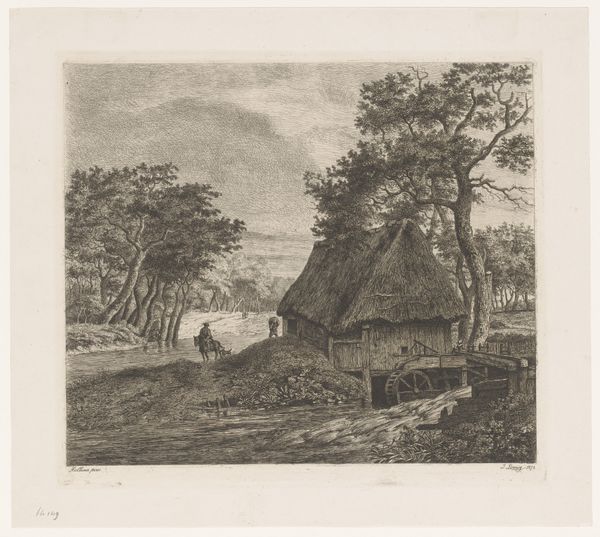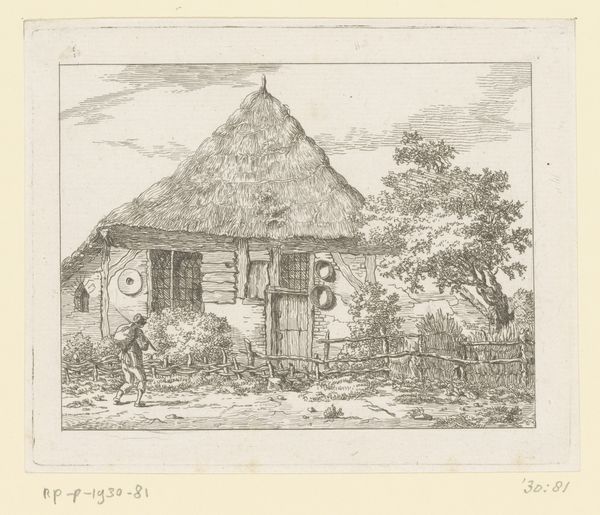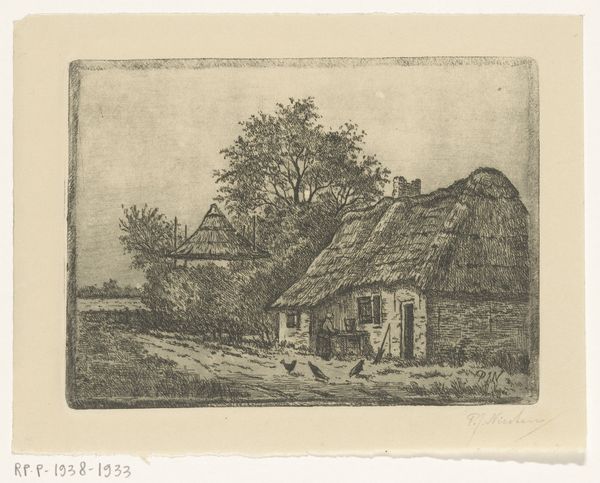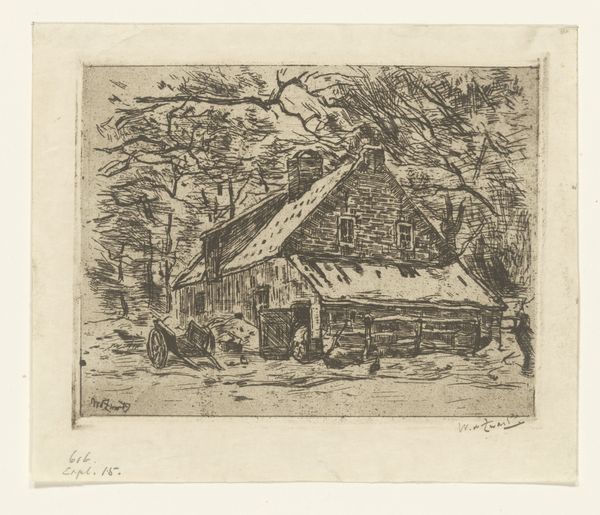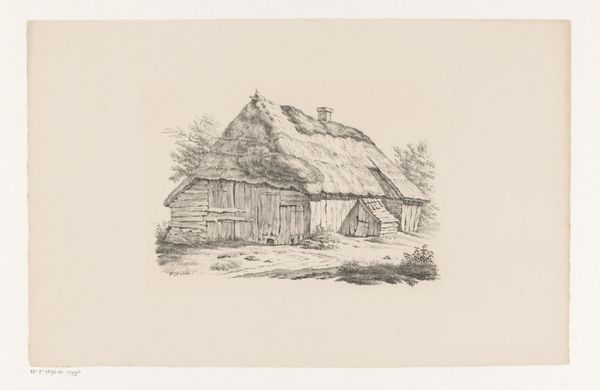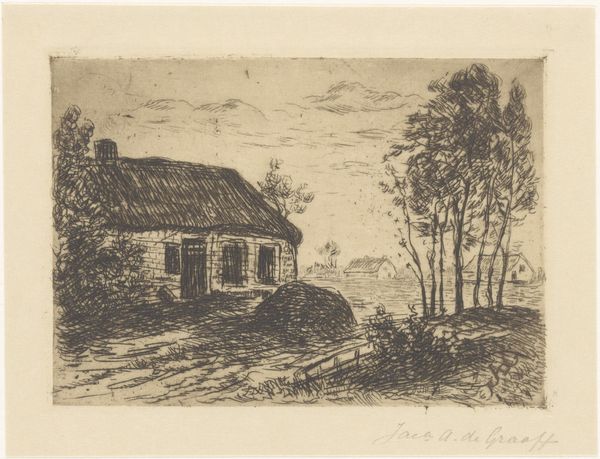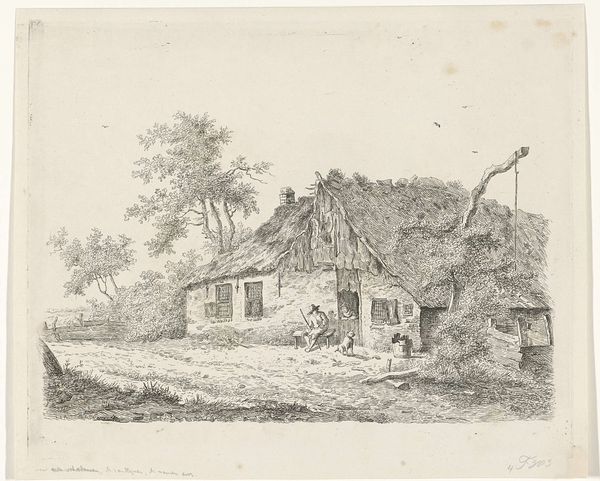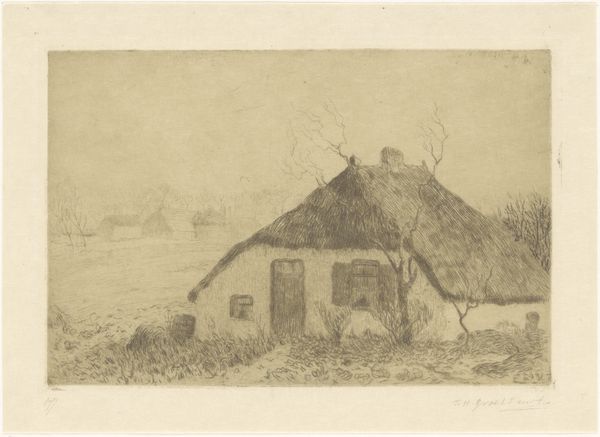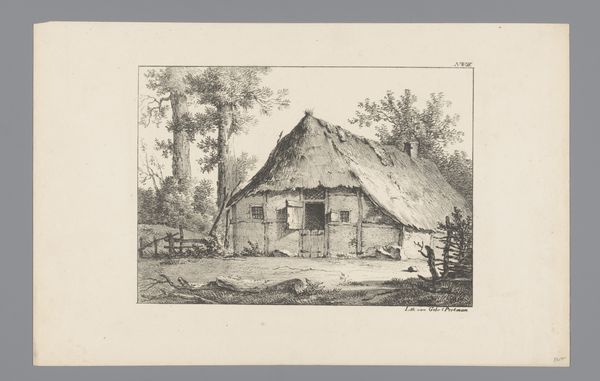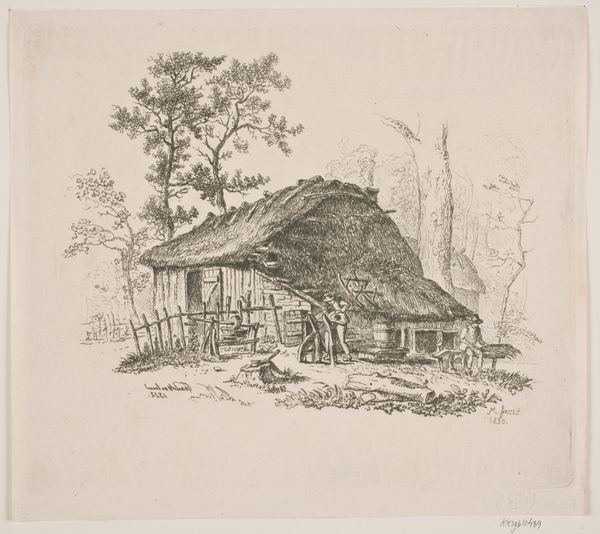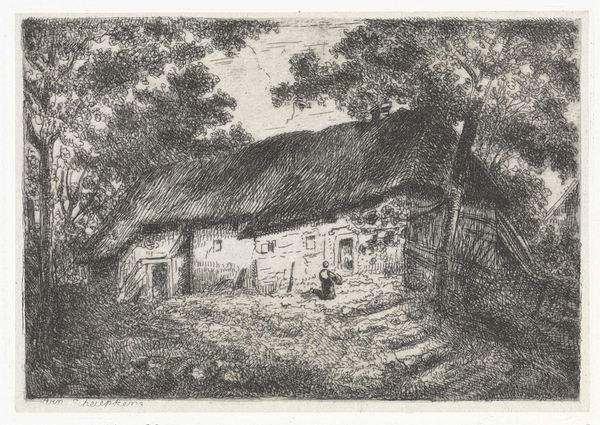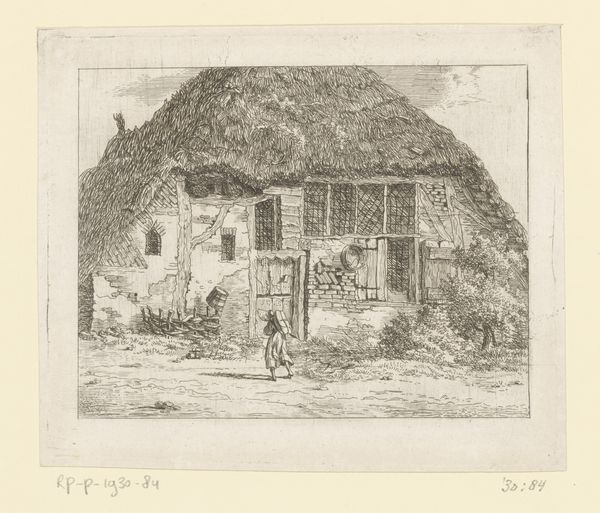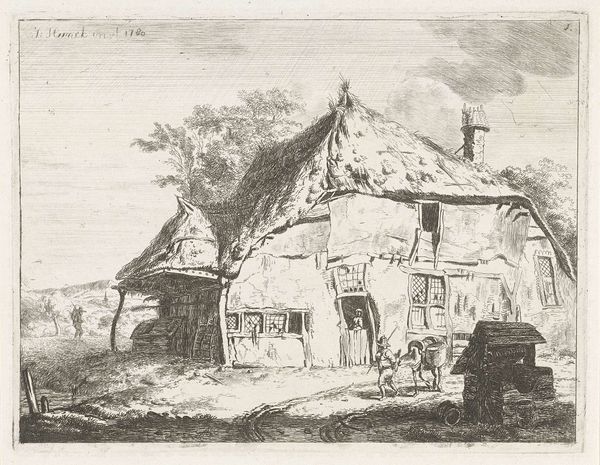
etching
#
etching
#
landscape
#
etching
#
realism
Dimensions: height 118 mm, width 160 mm
Copyright: Rijks Museum: Open Domain
Emilie Rolin-Jacquemijns made this etching of a farmhouse in Baarle-Nassau. Etching is an exacting process, where acid is used to bite into a metal plate, usually copper or zinc. The artist protects certain areas with a waxy ground, and then submerges the plate in acid. The longer the plate is exposed, the deeper the lines will be, and the darker they will appear when printed. It’s a skilled tradition that allows for nuanced tonal effects, and a degree of reproducibility. Here, the marks seem to emphasize the thatched roof of the building, and the rough texture of the surrounding foliage. As an etching, this work belongs to a history of creative practices that sits alongside painting and sculpture. But, in its focus on the material realities of rural life – the house, the crops, the vegetation – it also tells us something about the artist's social context. Looking closely at the materials and processes used, we can challenge traditional distinctions between fine art and craft.
Comments
No comments
Be the first to comment and join the conversation on the ultimate creative platform.
